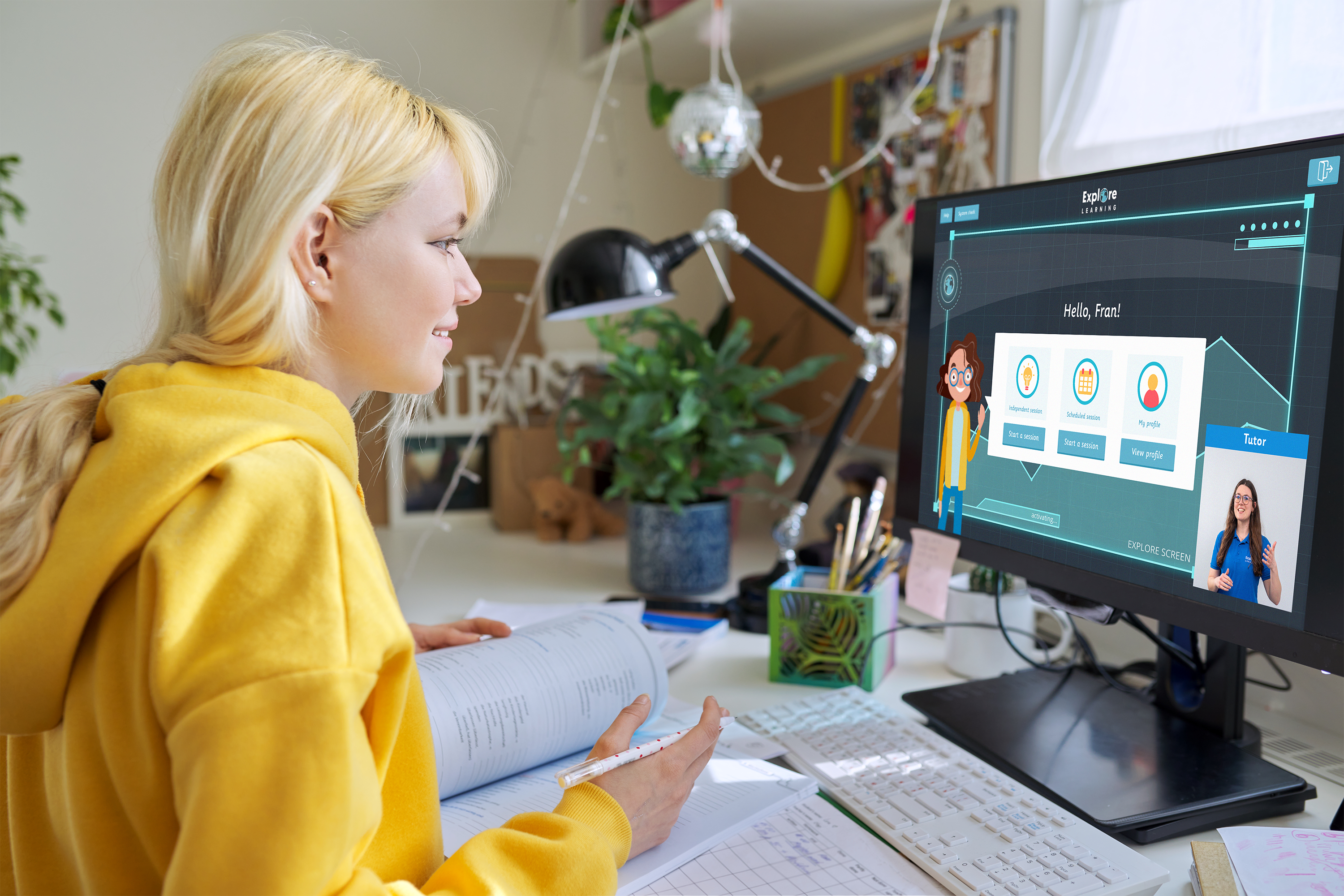Essential guide to revision techniques

Revision techniques are a valuable tool for students when preparing for exams, helping to improve the recall and understanding of the syllabus and making the sometimes overwhelming task of studying much more manageable.
When it comes to nailing exams, revision techniques can be key in helping students succeed. There is no single right way to approach revision, and it can be done in a number of ways by exploring many different techniques. Our guide provides top tips on how to approach revision for exams, the most effective techniques and methods, as well as suggestions for different learning styles to give students the best possible chance when it comes to exam season…
Getting started with revision
Here are our tips for kick-starting revision;
Make a plan: every student should decide what they want to achieve and develop a strategy to ensure they get there – setting realistic goals is key.
Develop a study schedule or revision timetable and stick to it as closely as possible. This will help students get the most out of their time studying. Create a time plan covering the period from now until the date of your last exam. Check out our revision timetable template.
Establish a routine. Make sure you have a consistent approach to revision to maximise your effectiveness.
Start with a general overview of the material. This will help to remember the key points and concepts.
Break down the information into smaller parts. This will help to focus on specific areas of the material.
Revision tips and techniques
Sometimes you need to find your own way of revising that provides results. Below, we list useful revision hacks that could work for you;
Create revision props and use learning resources to prepare for exams. Flashcards, mnemonic devices, learning logs or other revision tools are effective in helping you retain information and blank maps or a partial formula to fill in.
Keep a checklist of what you need to revise in each module/exam and tick off what has been completed during each study session.
Find the right pace for revision sessions. The Pomodoro technique is recommended: 25-min focus and 5-min break.
Structure your revision time. Plan to revise complex material in the morning with fresh eyes and easier material when your focus decreases towards the end of the day.
Be sure to review the material frequently. Revisit the material as often as possible, both in preparation for each exam and during exam season.
Practise along with educational videos and make sure you actively take notes or practice questions while the video is running. This will prevent your mind from wandering.
Look at past exam papers. Exam papers help you to familiarise the layout and type of exam questions. Practise completing exam papers in exam conditions and within the set time limit to improve exam technique.
Test yourself. It’s scientifically proven that dedicating a certain amount of study time to testing yourself cements information into your long-term memory.
Don’t revise in the same place every day. Visit the library or your local park – revising in different places will help concentration and focus.
Make time for exercise. Even the gentlest of exercise is proven to boost brainpower.
Listen to ambient music. Ambient music stimulates the brain without being too distracting.
Keep your phone in another room. This will help you refrain from checking messages or scrolling through social media.

Active vs passive revision
The most common revision technique students use can also be one of the most ineffective: reading notes. Reading notes is a passive revision technique that doesn’t fully engage your brain and isn’t an effective tactic for memorising information.
Active revision, including flashcards, study groups, mnemonics and practice questions, is all about using and organising information – finding the best ways to keep you engaged and help you learn. Active revision is a far more efficient form of studying, providing three main benefits;
It makes your brain work, which activates the memory centres of your brain, and makes you more likely to form strong memories of the information you’re trying to take in.
It makes you re-assess the information you think you know and forces you to work towards re-learning it.
It is far more interesting than passive revision exercises.
Essential revision hacks to improve memory
Important things to know about how to improve long-term memory during revision sessions;
Engage with the info: Just reading, highlighting or copying will not work. You need to engage with information on a deeper level to remember it.
Variety is key: Using multiple resources will also help your brain engage with the material – flashcards, diagrams, infographics etc.
Take a break: Studies have shown that recall goes down if you work solidly for too long. Once you have had a break, try testing yourself on what you revised before it.
Little and often: The more times you encounter something, the more likely you are to recall it. Therefore, it is better to cover the same thing several times for short periods.
Get your sleep: Your brain continues to work once you fall asleep, making sense of what you have learned and experienced during the day.
Repeat, repeat, repeat! Repetition is how you create long-term memories.

Learning styles
What are the four different learning styles?
Visual
Visual learners are better able to retain information when it’s presented to them in a graphic depiction, such as arrows, charts, diagrams, symbols etc.
Reading and writing
Reading and writing learners do best with written information on worksheets, presentations, and other text-heavy resources. These learners are note-takers and perform better when they can reference written text.
Auditory
Auditory learners prefer listening to information that is presented to them vocally. These learners work well in group settings by interacting with others and also enjoy reading aloud to themselves.
Kinaesthetic
Kinaesthetic learners are hands-on and prefer learning by getting stuck in! They thrive when engaging all of their senses during coursework and revision.
Revision techniques for visual learners
Convert written information into graphs, diagrams and mind maps. You can draw mind-maps or spider diagrams by hand or use computer software tools such as MindView and Coggle to allow for sharing with revision groups.
Colour coding work, e.g. all knowledge points in green, all evaluation points in red.
Underlining, circling or highlighting key information.
Try to use textbooks that contain lots of diagrams and visuals.
Revision techniques for reading & writing learners
Take thorough notes during class and rewrite them in your own words at a later date. Go through your papers and make condensed study notes for exam purposes. You might want to use separate folders for each topic.
Structure your revision by writing bulleted lists.
Convert diagrams and charts into your own words – what do the diagrams show?
Keep hold of handouts and materials from teachers and incorporate these into your study.
Revision techniques for auditory learners
Memory aids. Use memory aids such as flash cards and mnemonics to help you remember facts.
Discuss your notes with other students.
Recite information written on paper out loud.
Record yourself reading your notes and play it back (ideally just before you go to sleep at night!)
Listen to revision podcasts (again, just before bed is ideal).
Study with a friend or ask a family member to help you out so you can talk through the information.
Revision techniques for kinaesthetic learners
Hands-on revision. You may learn best by hands-on practice and doing. You may find it useful to re-enact situations while studying or make up actions to go with keywords or concepts.
Rehearse exam answers. You might also want to practise writing exam answers. Mock exams can help you work out how much you will need to write within the time and what you need to practise further.
Review flashcards or notes whilst doing some form of activity, for example, walking around the park or even brushing your teeth!
Highlight materials as you go.
Type your notes up on a computer or trace words as you’re reading them – keep your fingers busy.
Take frequent breaks to lengthen concentration span.
Discover our tuition programmes
Our Explore Learning maths and English tutors are on hand with exam tuition, covering SATs, 11 Plus and GCSE material to help students master revision techniques, boost their confidence and prepare them for exam season. You can discuss any questions you may have with our team by booking a free trial session today.
Cancel anytime
No joining fee
In centre or online
Memberships to suit you
Cancel anytime
No joining fee
In centre or online
Memberships to suit you
Cancel anytime
No joining fee
In centre or online
Memberships to suit you




